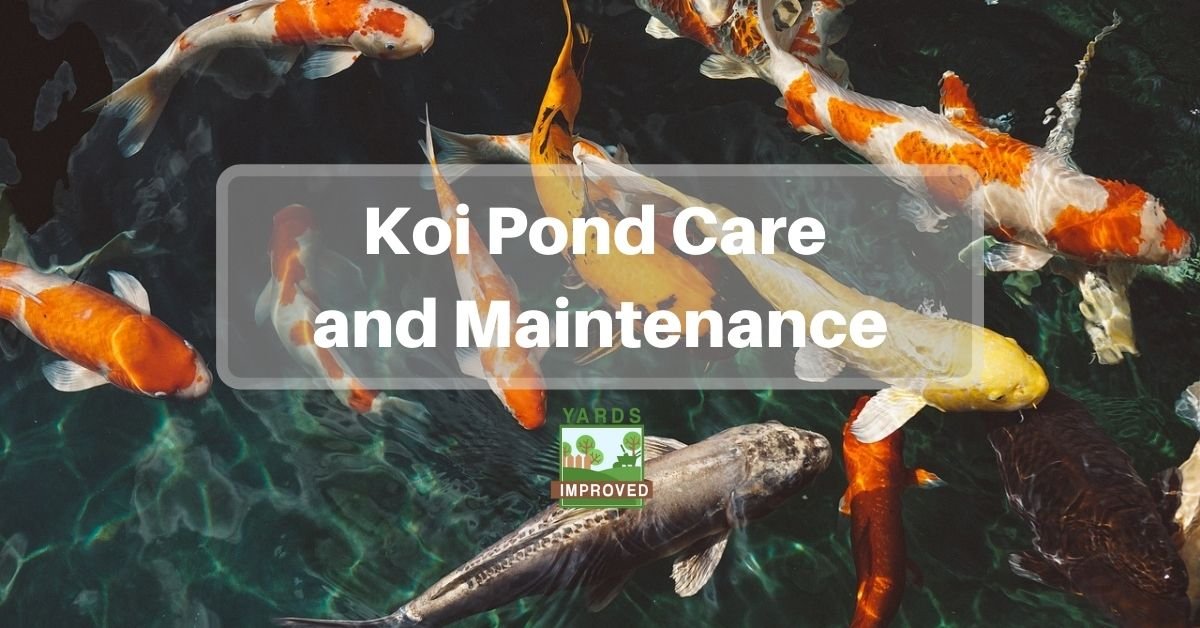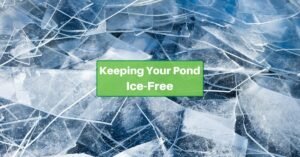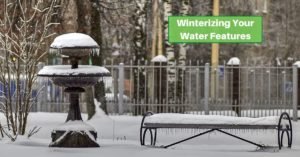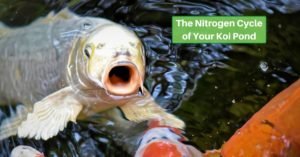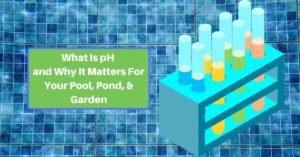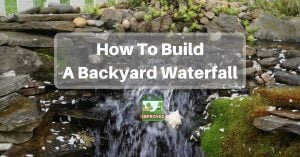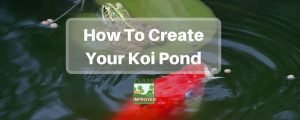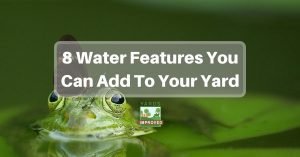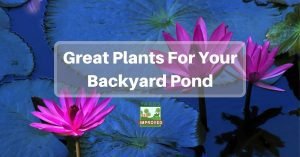A koi pond is a beautiful and relaxing addition to any yard. The hardiness of these fish makes them great for the outdoors, even in colder climates. At the same time, taking proper care of the pond is essential to helping your fish live long and happy lives. And of course, that also means you’re making the time and money you’ve invested all worthwhile.
Koi pond care isn’t difficult, but it does require regular attention. What do you need to do to take care of your pond, and how often should it be done? Let’s have a look at some tips for keeping yours in optimal conditions. We’ll include both preventative care and how to clean the pond.
If you haven’t installed a pond yet, be sure to check our article on how to build your own koi pond!
Test The Water
Water quality should be tested on a regular basis to make sure chemical levels are maintained at suitable levels.
Pet stores and many garden shops will carry kits that will test the pH, ammonia, nitrate, and nitrite levels of your pond. You’ll likely find them in big box stores in the pet food and supplies section, too. The kits are easy to use and the tests take only a few minutes.
Koi thrive in water that’s a bit alkaline – that is, it has a pH of 7.0 to about 8.4. The pH level is affected by your water natural. But rain, rocks that are in the pond, and other chemicals that enter the water can also change it.
Ammonia is produced by fish waste. Over time, pond plants and bacteria help convert that ammonia to nitrites, and other bacteria convert nitrites to nitrates. Each of these can be toxic to fish but at different levels. Nitrites are the most dangerous but is the first product of converting ammonia in fish waste and decomposing food into less-harmful nitrates. Nitrates are the least dangerous but in high concentrations are still a problem; water changes help to remove them. Be sure to read up on the nitrogen cycle to understand what’s going on and how to keep everything in tip-top shape.
Regular testing will help make sure there is not an overload of any of these chemicals in your pond. If there is an issue, you’ll have to find ways to treat it. There are many possible causes and equally varied solutions.
Testing should be done about once a week. A smaller pond has less space for chemicals to dissipate so you might want to do it even more often. On the other hand, with a larger pond, you may be able to do it less frequently.
Avoid Overfeeding
One of the most important steps to keep a koi pond clean and your koi healthy is to feed only the appropriate amount to them.
Koi only need to be fed once a day. They should only be fed what they’ll eat right away. It might take a little while to find the exact amount, but it’s better to err by being a little under than overdoing it.
Excess food will decompose in the water. This causes contamination that in turn can sicken your koi, the same way that breathing polluted air can damage you. So keep the feeding level to the appropriate amount.
Keeping It Clean Part I: Debris
Basic cleaning of your pond requires being alert to its conditions. A pond skimmer is a great investment and can help you pick debris off the surface.
Look for any leaves, twigs, or branches that might fall in over time. Try to remove them before they can accumulate. Of course, in the fall, you’ll likely see more leaves. Windy seasons might lead to twigs breaking off and falling in. While this would happen in the fish’s natural habitat too, your system is more closed. That means that as these organic elements start to break down, they’ll add to the pollution in the water. Also, they can look bad, too.
Pond plants are both beautiful and functional since they help convert carbon dioxide in the water to oxygen that’s needed by the fish. But be alert for any dead plants or leaves and remove them.
Insect control is a difficult balance around a pond. Many insects – including mosquitoes – lay their eggs in or around the water. While these are pests, they are also great sources of food for your fish, too. You don’t want to use pesticides in the area of the pond, either, since they can easily mix with the water and poison your koi. In most cases, it’s best to let the fish control the population.
If you do need to do something to control pests, you might want to consider organic pest control. This may be less harmful to your fish. Still, it’s important to be careful about any foreign substance – including organic ones – that may leech into your pond.

You may also find that your pond attracts other creatures, from frogs and toads all the way up to deer. Again, this is generally a good thing. You can enjoy the view of nature. If unwanted animals are causing other problems, you should contact your local pest control.
Animals, including insects, should be seen as natural and welcome pond residents and guests. They aren’t a hindrance to pond cleanup. Concentrate on paying attention to dead plants or leaves so you can keep the water more pristine.
Keeping It Clean Part II: Algae
Algae will develop naturally in a pond as well but without careful attention, it can quickly overwhelm a pond.
Different types of algae grow in different conditions. Green algae need a lot of light, although it is generally a healthy type of algae if kept under control. Brown algae usually mean there isn’t enough light reaching the area.
But keeping algae under control is key. It will grow according to the availability of nutrients so having other plants in the pond is a big way to control algal growth.
Water circulation is another important issue. A good filter will keep the water moving and help remove the carbon dioxide that plants thrive on while also mixing in oxygen for the fish.
Regular water changes and proper care help keep algae under control. In case things get out of hand, there are chemical treatments available that are safe for your fish. Or you might want to drain your pond completely and thoroughly clean the liner and rocks to get a fresh start.
Water Changes
Another important step to caring for your koi pond is regularly changing the water. But it’s important to realize there are two things this does not mean.
First, you never want to change all the water at once. Your koi have grown accustomed to the temperature and chemical makeup of the water in your pond. A radical change will cause shock which can weaken them and even lead to death.
On the other hand, water changes mean more than topping off the pond. It’s not enough to put more water in just because the level has lowered.
You should change about 20% of water about every two weeks or when your water tests reveal that things are out of balance. That means siphoning it off and then refilling the pond with fresh water. This process removes chemical buildup along with the water.
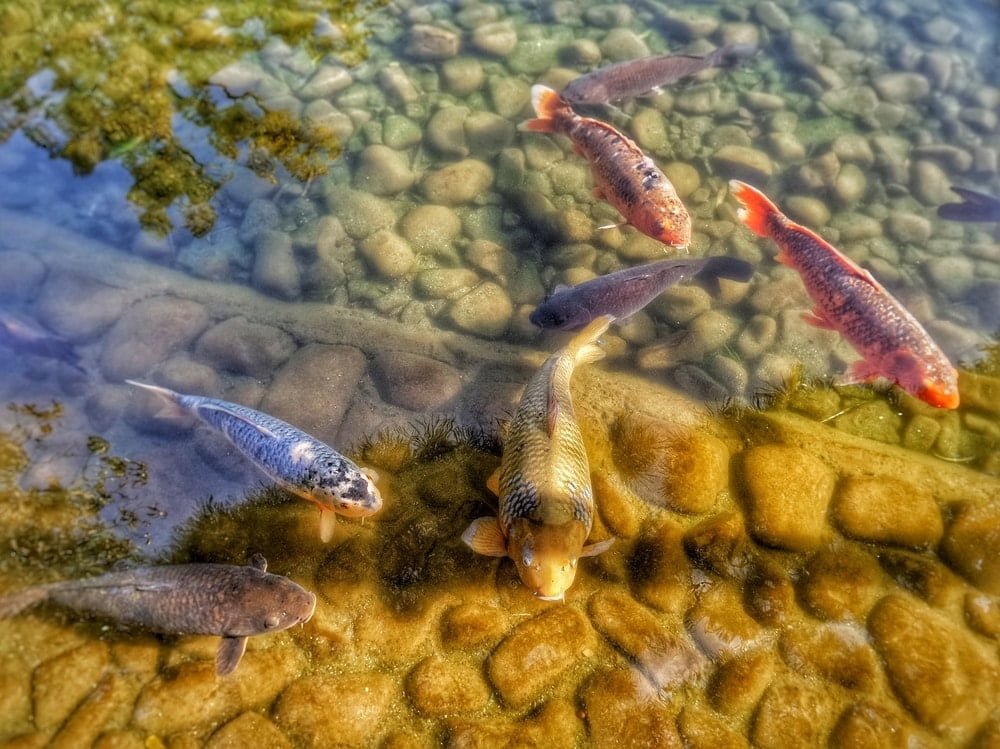
When water evaporates, it leaves behind any ammonia, nitrates, and nitrites. Simply adding more water will let those concentrations build up further. That’s why it’s important to remove water manually so that it can carry those chemicals with it.
Your water tests will help you get a better handle on how often to change the water. Again, smaller ponds will need it more often; larger ones are more forgiving. Early in the pond’s life, you may need to do more frequent water changes because the bacteria colonies aren’t well-established.
When adding water, it’s best to allow it to sit for a couple days so that any chemicals added by your water department can evaporate. This is a lot easier to do for a small fish tank indoors than a large outdoor pond, though. You may not have space to store the water. So it’s best to treat the water with chemicals when you’re adding it to the pond.
The need to fully empty your pond completely should be rare if you take care of it. However, if it does occur, you’ll need a pool of some kind to house your fish temporarily. It should be big enough for the length of your fish and at least a foot deep. At least half of the water should be from the pond. Use an air pump to help supply oxygen to the water.
After removing the fish, drain the water completely. Then scrub everything inside down thoroughly. You can use just water for this, but if you choose to use chemicals, be sure they are safe for the fish. Never discard all the filter material at once; the beneficial bacteria live there. The only exception would be in cases where there is some poisonous chemical in the water.
When the cleaning is complete, refill the pond about halfway and add dechlorinating agents. If possible, allow the water to sit for a day or two before return the fish, along with the water from their temporary home, to the pond. Otherwise, be sure to treat the water with dechlorinating agents and other water treatment chemicals.
Filtration Systems
Filters are a key to preserving the cleanliness and health of your pond. They circulate the water, which allows a buildup of carbon dioxide to escape and oxygen to enter the water. But they also are a primary home for the crucial bacteria colonies.
Be sure that your filter system is running as intended. Water should pass through it smoothly.
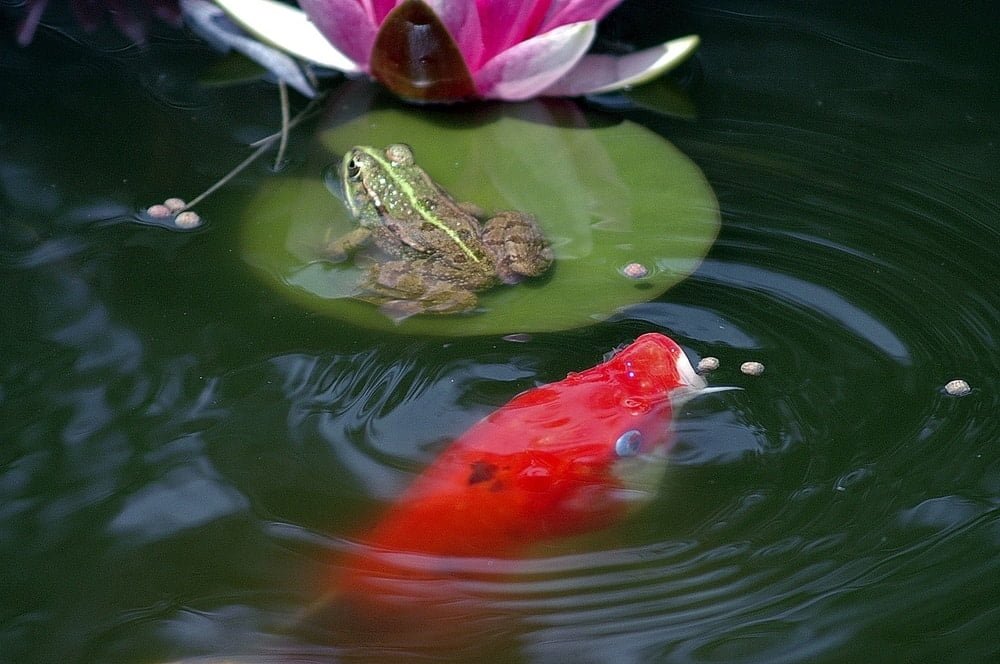
Make sure there aren’t any blockages. Leaves can easily get pulled into the intake but then prevent water from flowing. When water supplies get cut off for any reason, you’ll usually notice a grinding or sucking noise. Causes include blockages or lack of water in the filter to “prime” it. The latter is common after power outages. Those noises are signs to check as soon as possible.
Filter material comes in various forms. They generally include some sort of container where the water passes through charcoal. Occasionally removing and replacing part of the charcoal is important; however, it shouldn’t be changed all at once.
Winter Care Of Your Koi Pond
In colder climates, koi ponds may freeze over during winter. As long as the pond is deep enough that there will be room for the fish to swim under the ice, that’s not a problem.
You should, however, making sure enough oxygen can reach the fish. Adding an oxygen pump is one important way to do this.
It’s also good to drill or otherwise open a hole in the ice. This will allow a bit more oxygen to enter the water and carbon dioxide to escape. If you hadn’t added your oxygen pump before the ice formed, you’ll also need the hole to add the oxygen tube.
If your pond is too shallow, you’ll need to move the fish to a winter home. Be sure they have enough room to swim and that their other needs for oxygen and clean water are met.
Conclusion
Having koi in your yard is a great way to increase your enjoyment of the outdoors. Koi pond care is not difficult or time-consuming, but it does require regular attention. Keep your fish healthy and your pond beautiful so that they and you can both enjoy the pond for years to come!

